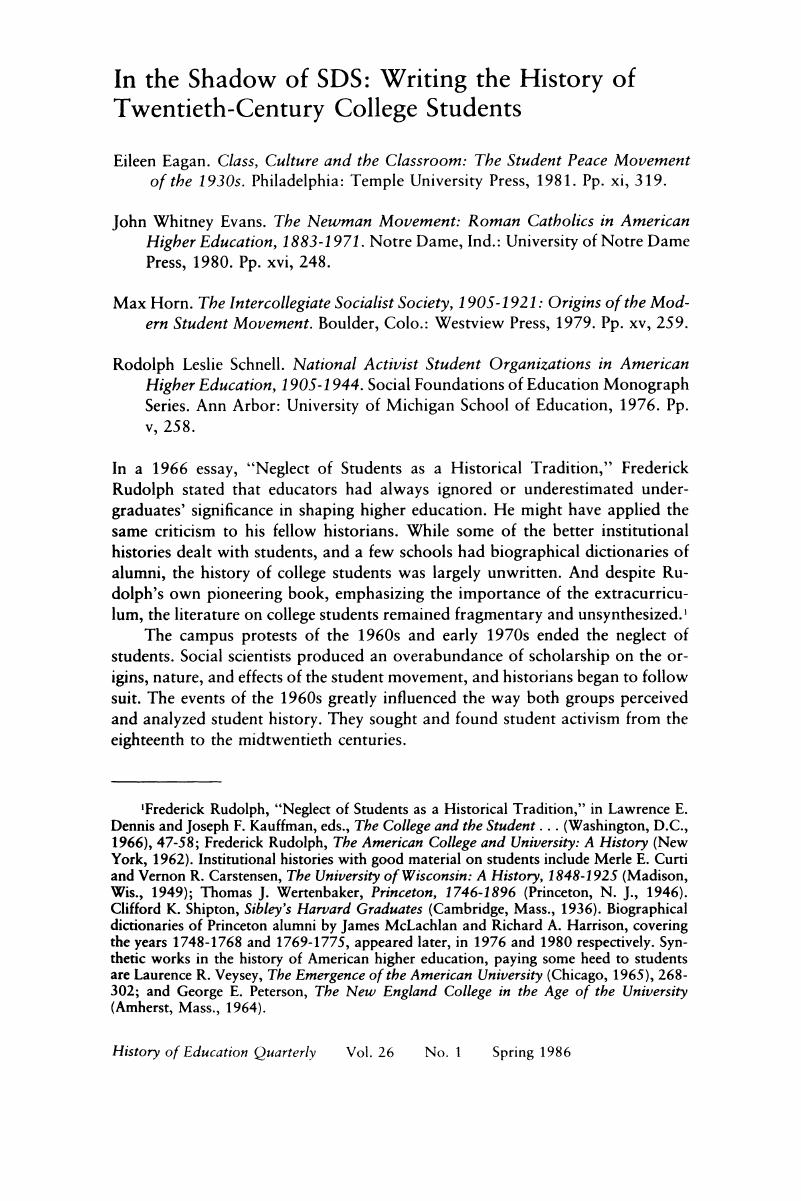Published online by Cambridge University Press: 24 February 2017

1 Rudolph, Frederick, “Neglect of Students as a Historical Tradition,” in Dennis, Lawrence E. and Kauffman, Joseph F., eds., The College and the Student… (Washington, D.C., 1966), 47–58; Rudolph, Frederick, The American College and University: A History (New York, 1962). Institutional histories with good material on students include Curti, Merle E. and Carstensen, Vernon R., The University of Wisconsin: A History, 1848–1925 (Madison, Wis., 1949); Wertenbaker, Thomas J., Princeton, 1746–1896 (Princeton, N. J., 1946). Shipton, Clifford K., Sibley's Harvard Graduates (Cambridge, Mass., 1936). Biographical dictionaries of Princeton alumni by McLachlan, James and Harrison, Richard A., covering the years 1748–1768 and 1769–1775, appeared later, in 1976 and 1980 respectively. Synthetic works in the history of American higher education, paying some heed to students are Veysey, Laurence R., The Emergence of the American University (Chicago, 1965), 268–302; and Peterson, George E., The New England College in the Age of the University (Amherst, Mass., 1964).Google Scholar
2 The best source of information on the new student history of the eighteenth and nineteenth centuries is Potts, David B., “Students and the Social History of American Education,” History of Education Quarterly 15 (Fall 1975): 317–27. Potts cites work by Allmendinger, David, Burke, Colin, McLachlan, James, and others, in particular demographic studies, which change the way historians look at the colonial and antebellum colleges. See Allmendinger, David F., Paupers and Scholars: The Transformation of Student Life in 19th Century New England (New York, 1975); McLachlan, James, “The Choice of Hercules: American Student Societies in the Early 19th Century,” in Stone, Lawrence, ed., The University in Society (Princeton, N.J., 1974), 2: 449–94. For work published since then, see especially Burke, Colin B., American Collegiate Populations: A Test of the Traditional View (New York, 1982); DeMartini, Joseph R., “Student Culture as a Change Agent in American Higher Education: An Illustration from the Nineteenth Century,” Journal of Social History 9 (June 1976): 526–41; Moore, Kathryn McDaniel, “The War with the Tutors: Student-Faculty Conflict at Harvard and Yale, 1745–71,” History of Education Quarterly, 18 (Summer 1978): 115–27; Novak, Steven J., The Rights of Youth: American Colleges and Student Revolt (Cambridge, Mass., 1977); Vine, Phyllis, “The Social Function of Eighteenth-Century Higher Education,” History of Education Quarterly 16 (Winter 1976): 409–24. For a discussion on the literature of women college students, see below, page 000.CrossRefGoogle Scholar
3 For an interesting discussion of writing “generational” history, certainly a key topic for historians of college students, see Spitzer, Alan B., “The Historical Problem of Generations,” American Historical Review 78 (Dec. 1973): 1353–85.CrossRefGoogle Scholar